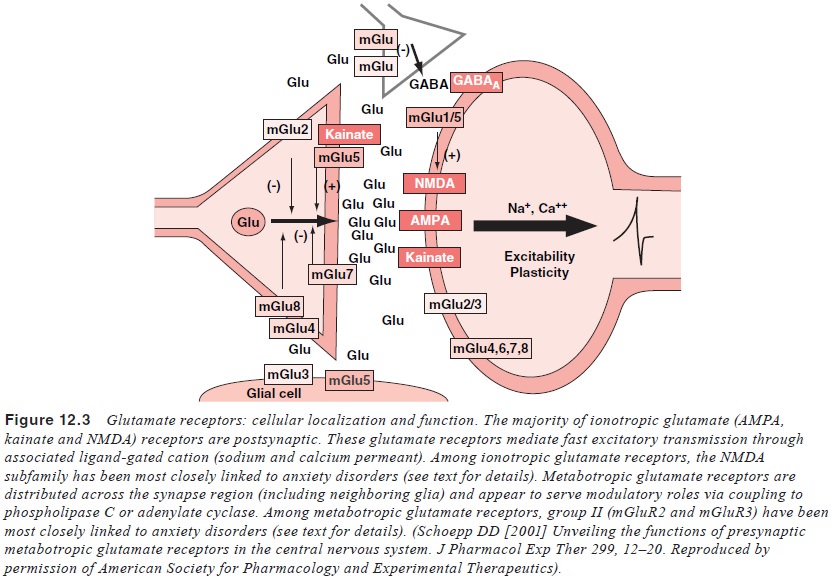Chapter: Essentials of Psychiatry: Psychiatric Pathophysiology: Anxiety Disorders
Glutamate
Glutamate
Glutamate is the principal excitatory transmitter
in the mammalian CNS. A discussion of the role of glutamatergic transmission is
included in this overview based on an extensive preclinical literature linking
modulation of both ionotropic (N-methyl-D-aspartate)
and metabotropic (mGluR2) glutamate receptor subtypes (Figure 12.3) to anxiety
(Skolnick, 2000). Further, a recent, albeit preliminary, clinical study(Levine et al., 2001) appears to validate
preclinical findings indicating that glutamate receptors are a valid target for
the

development of novel anxiolytics. Like serotonin
receptors, the glutamate receptor superfamily includes both ionotropic and
G-protein coupled receptors (GPCR). The structural and molecular details of
both receptor classes have been reviewed in detail (Schoepp, 2001; Conn and
Pin, 1997; Palfreyman et al., 1994;
Cotman et al., 1995). A brief
overview of two glutamate receptor subtypes is provided as a background to
place preclinical and clinical findings in context.
Related Topics